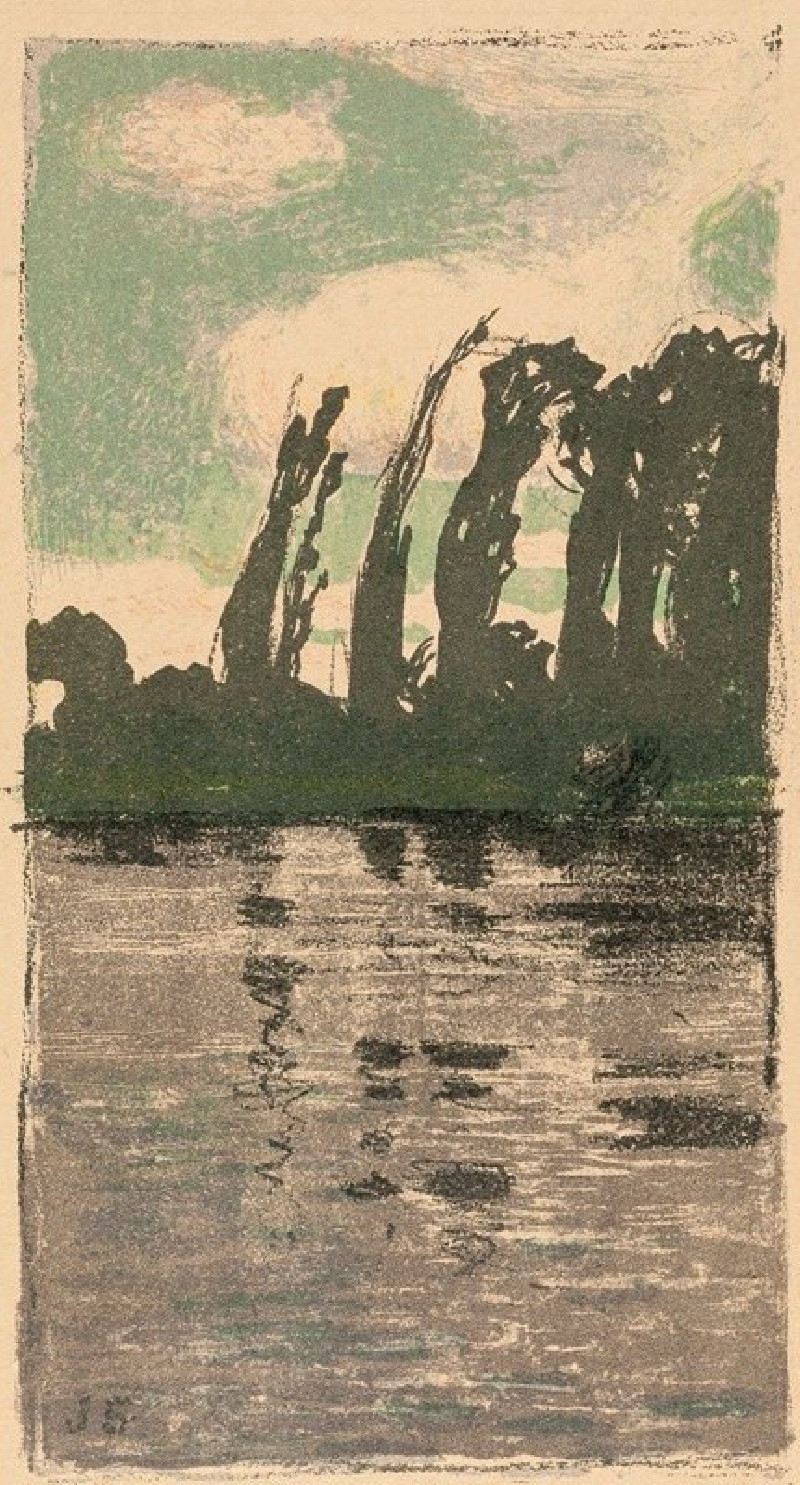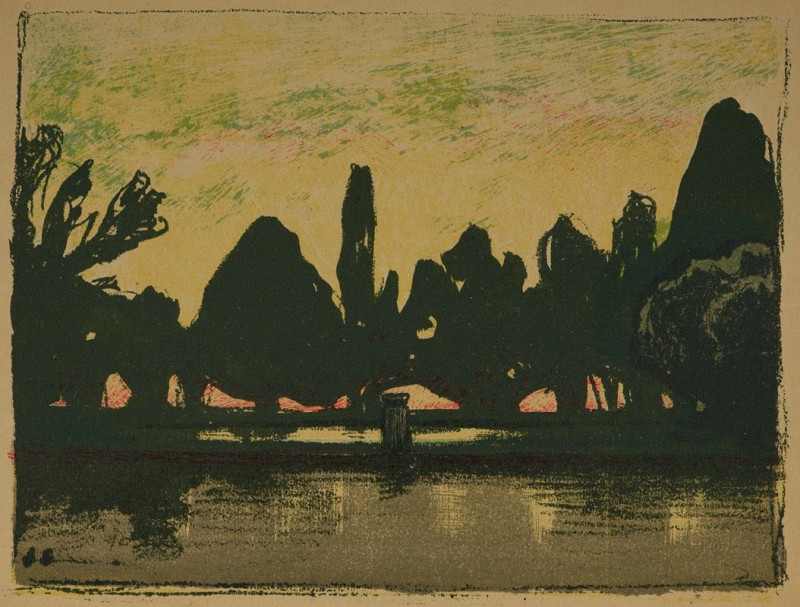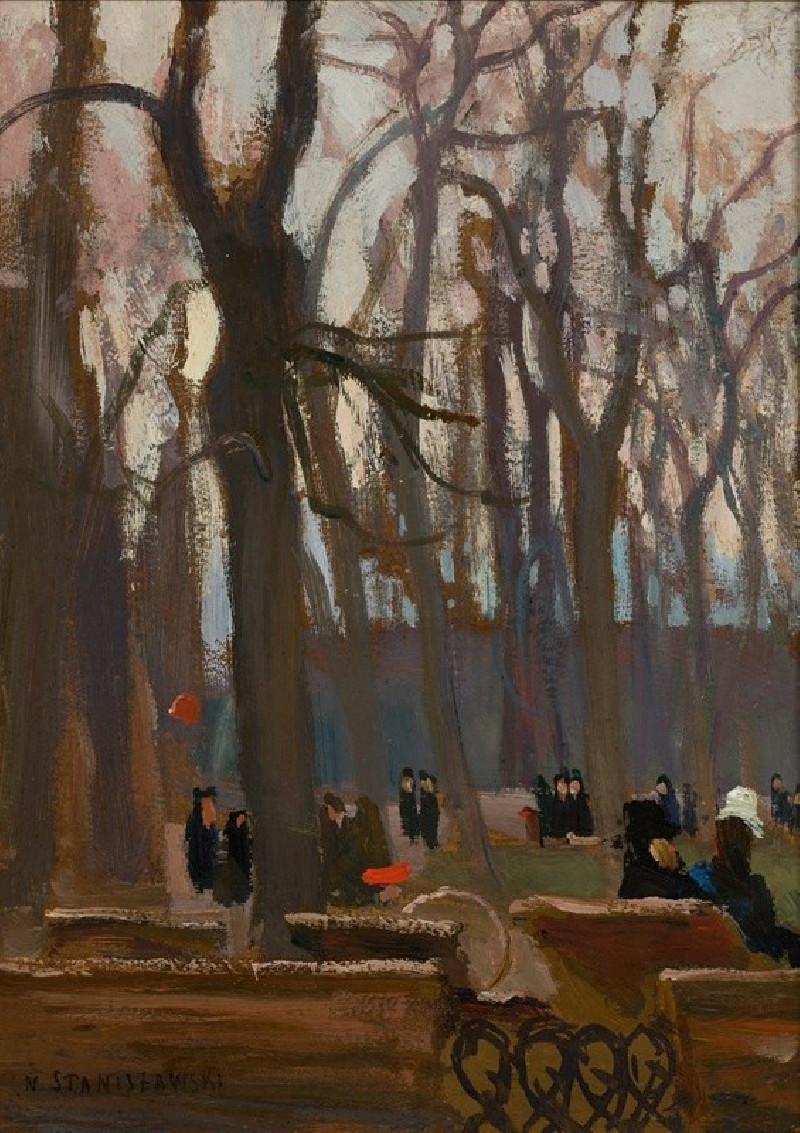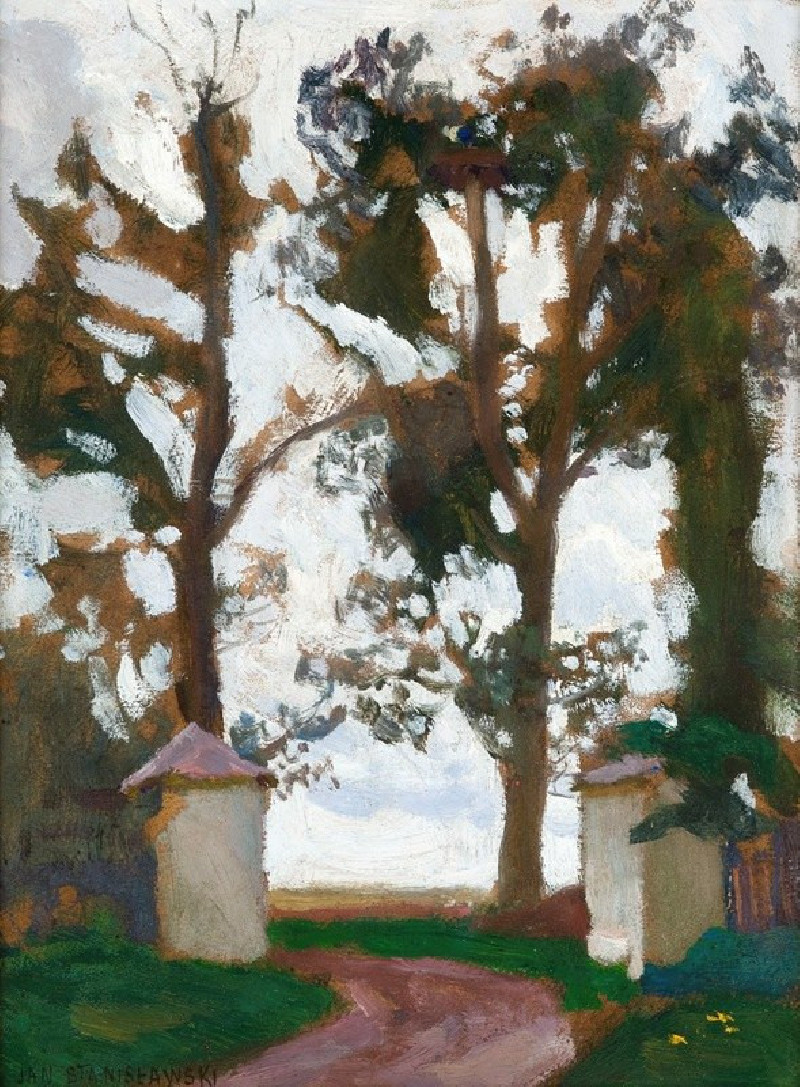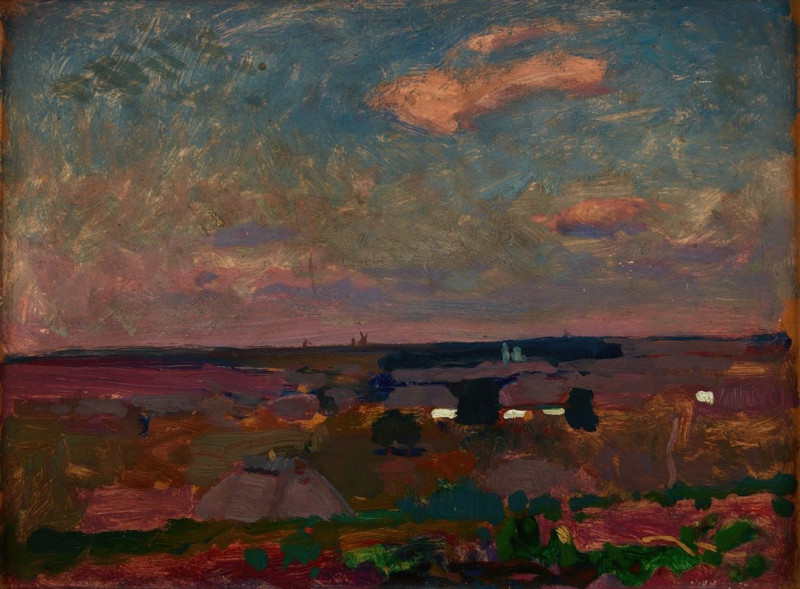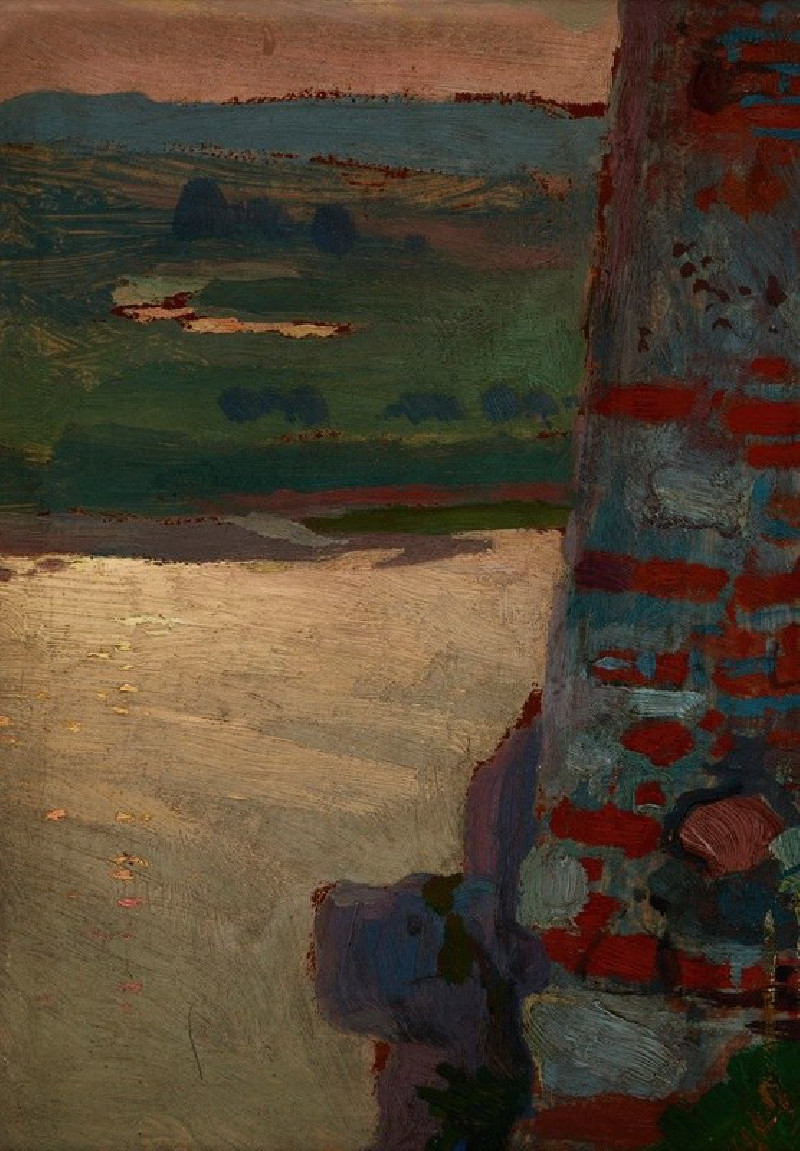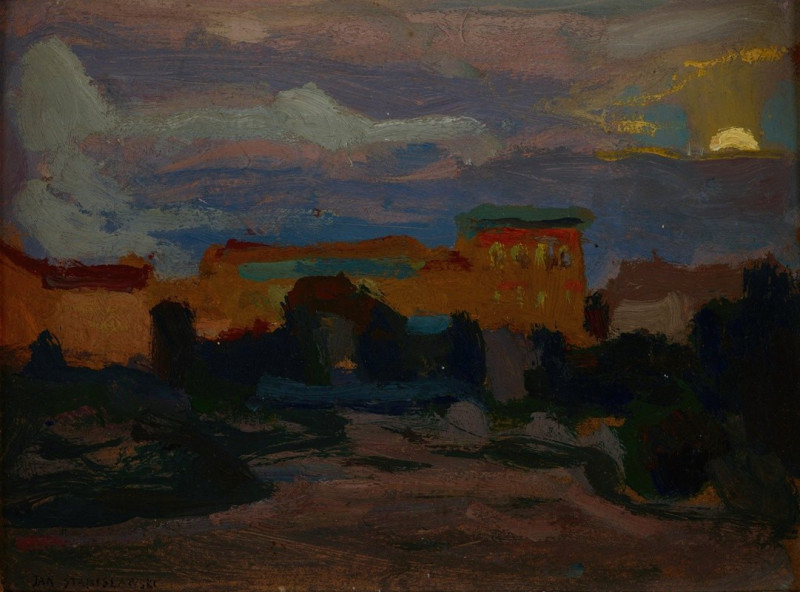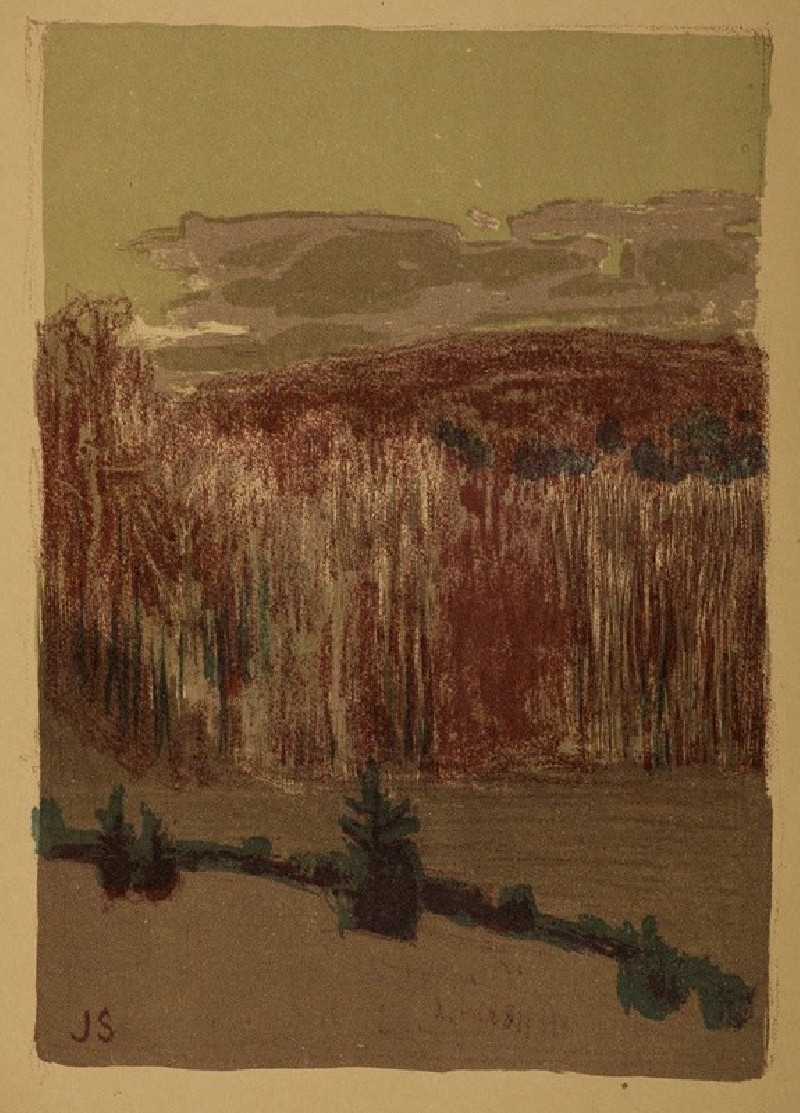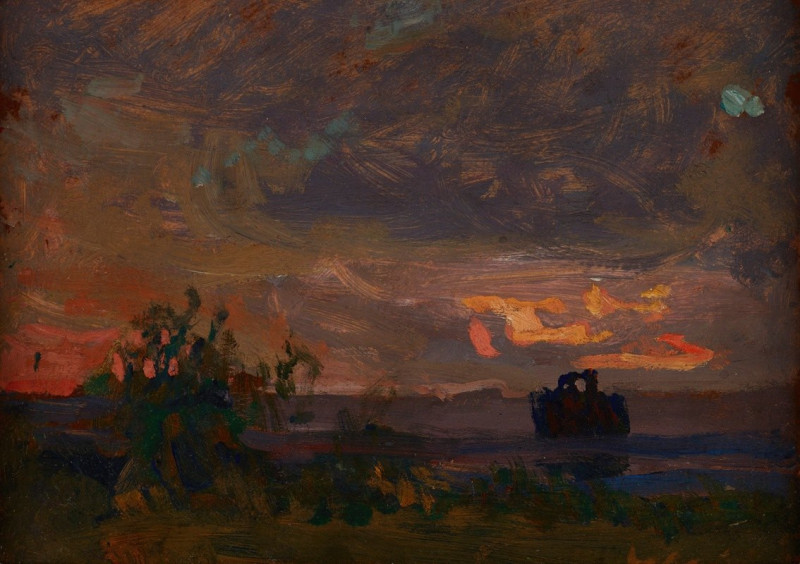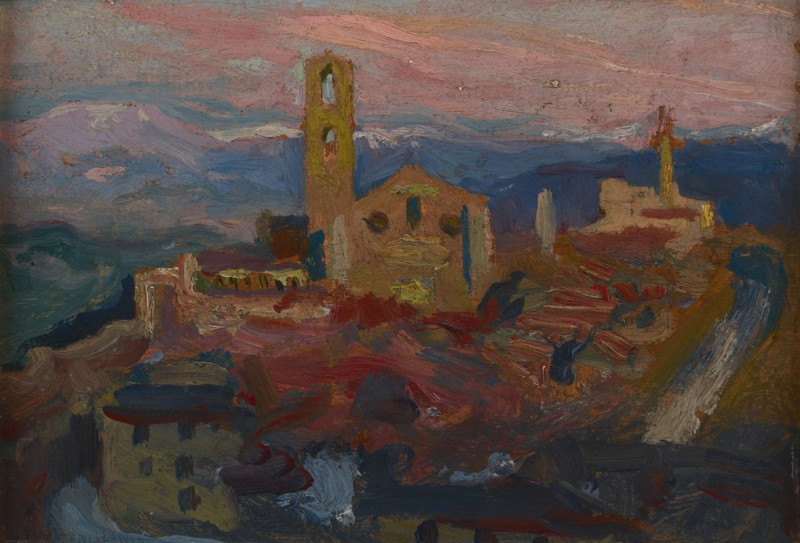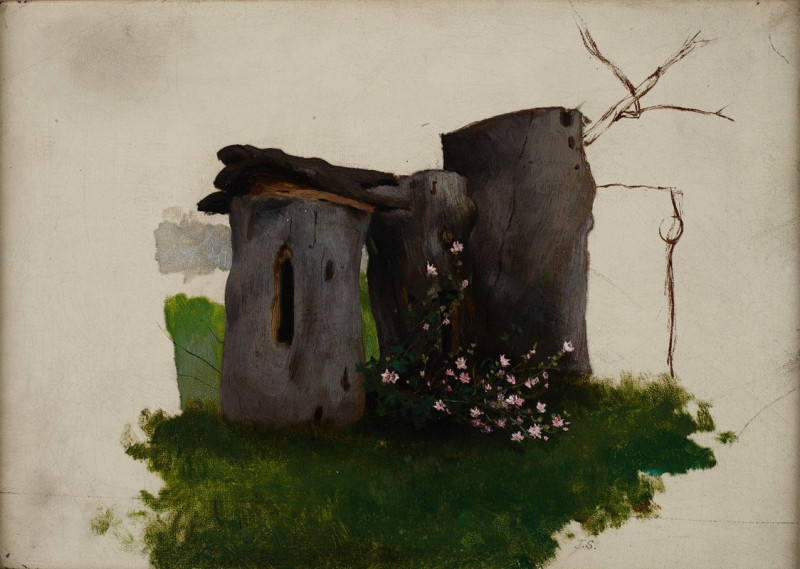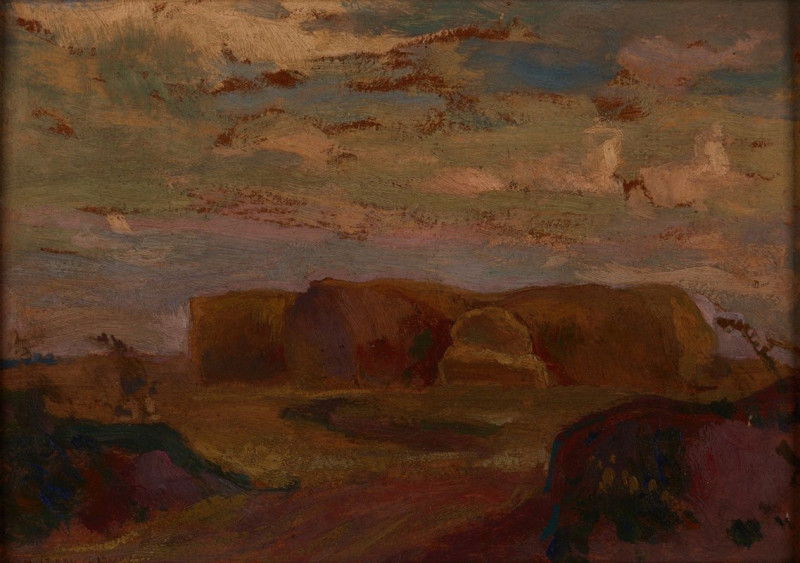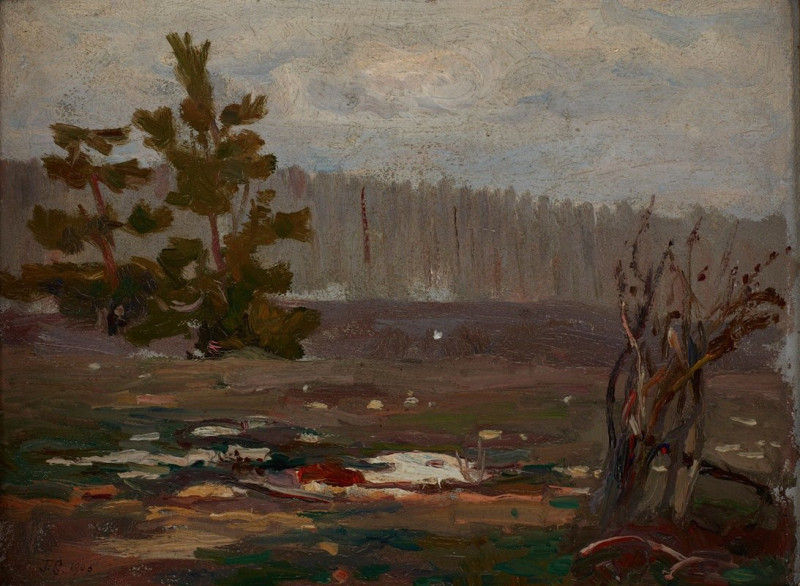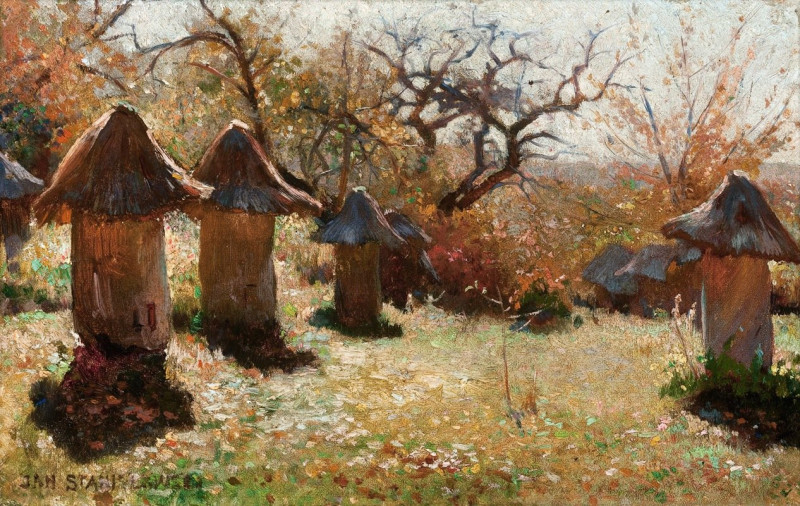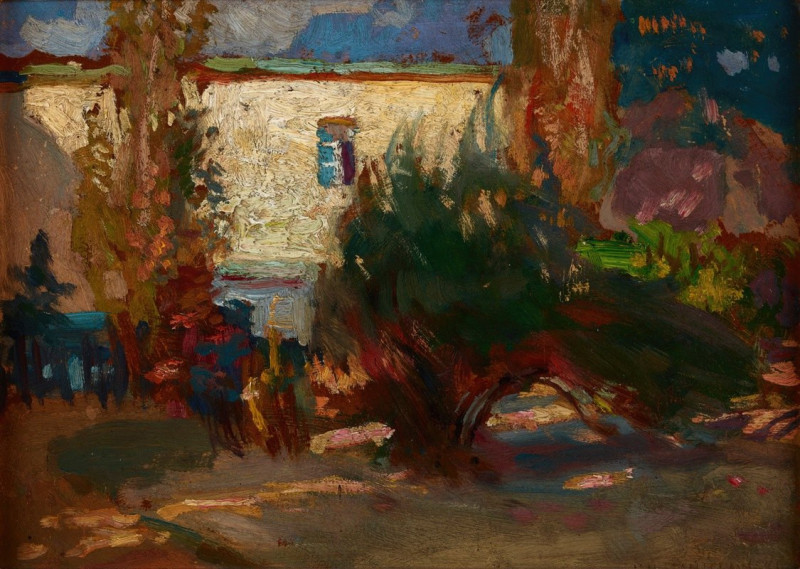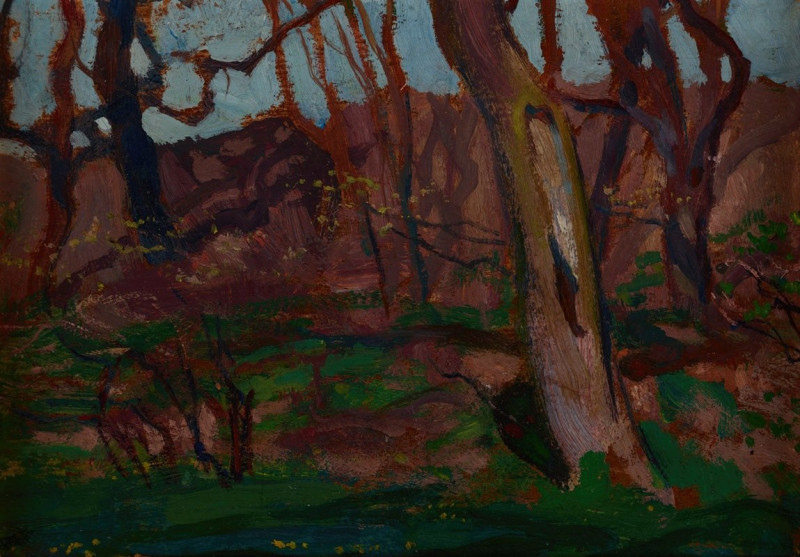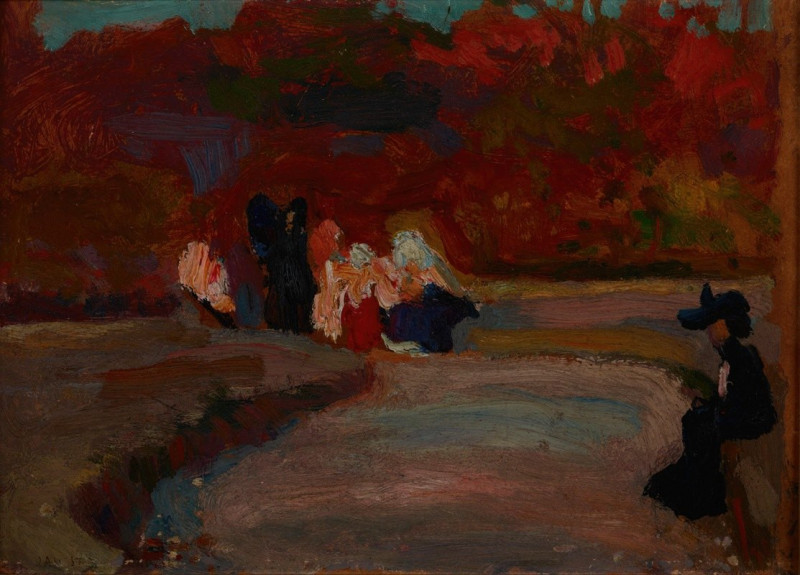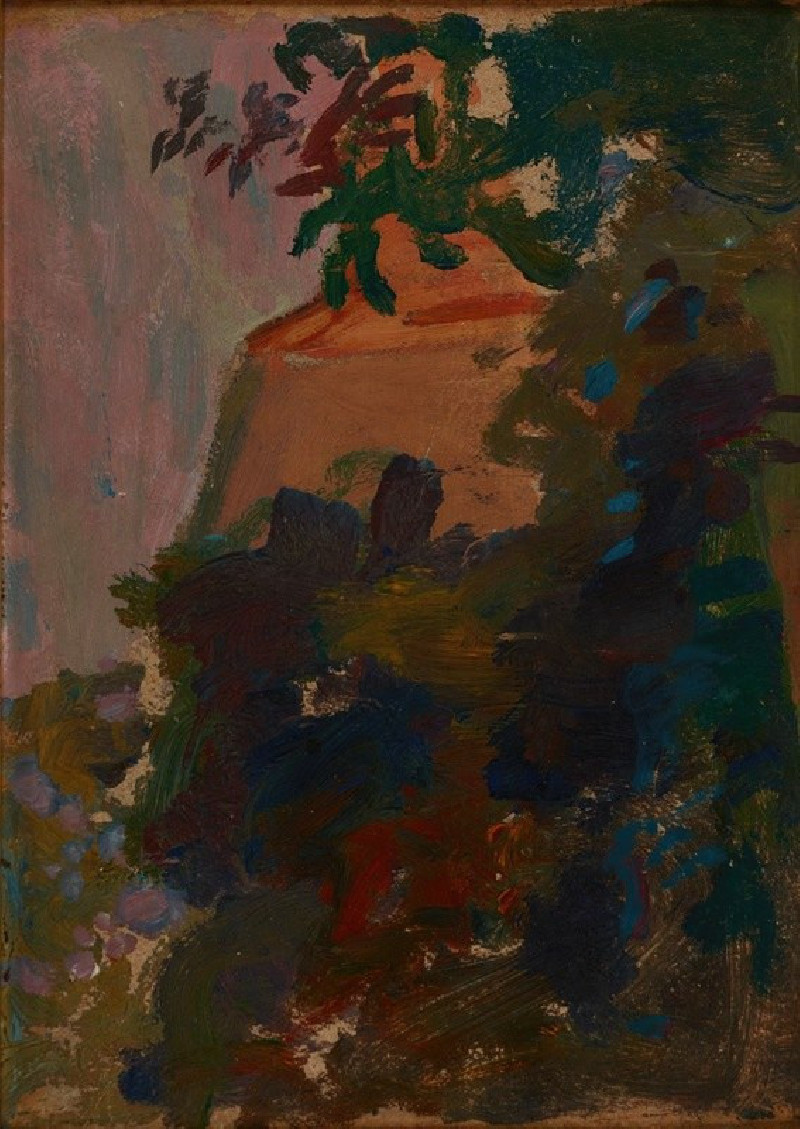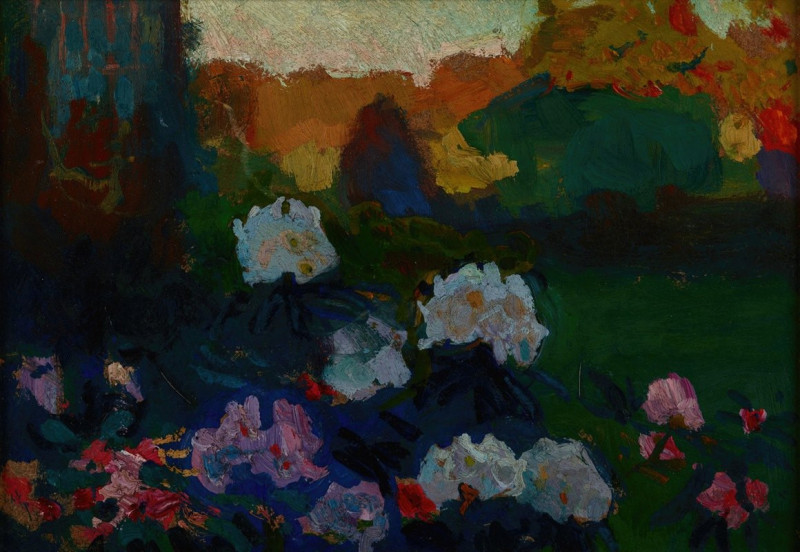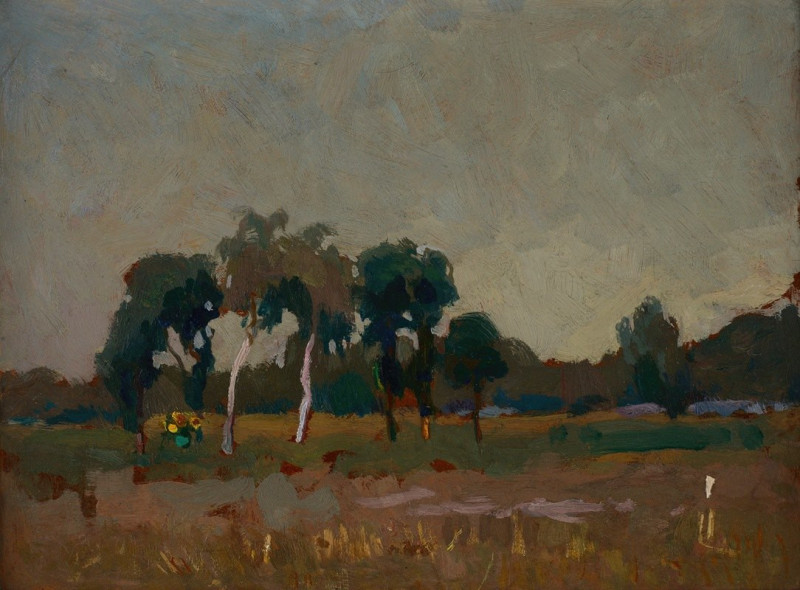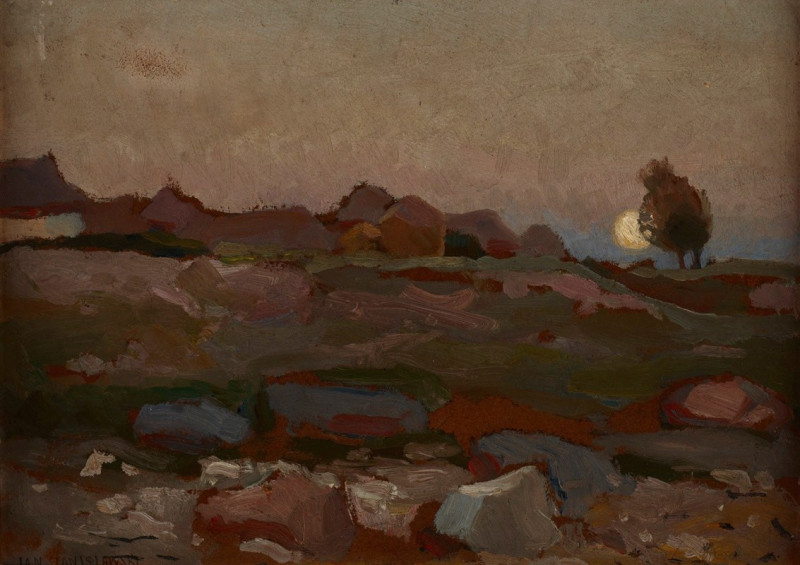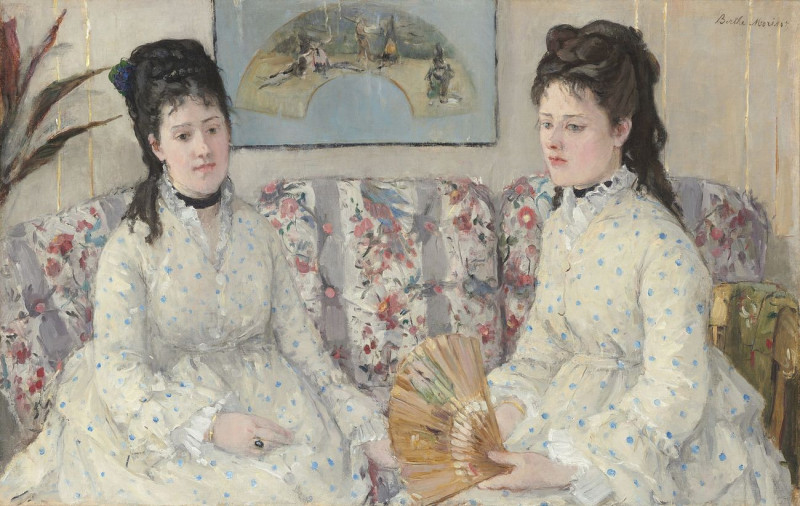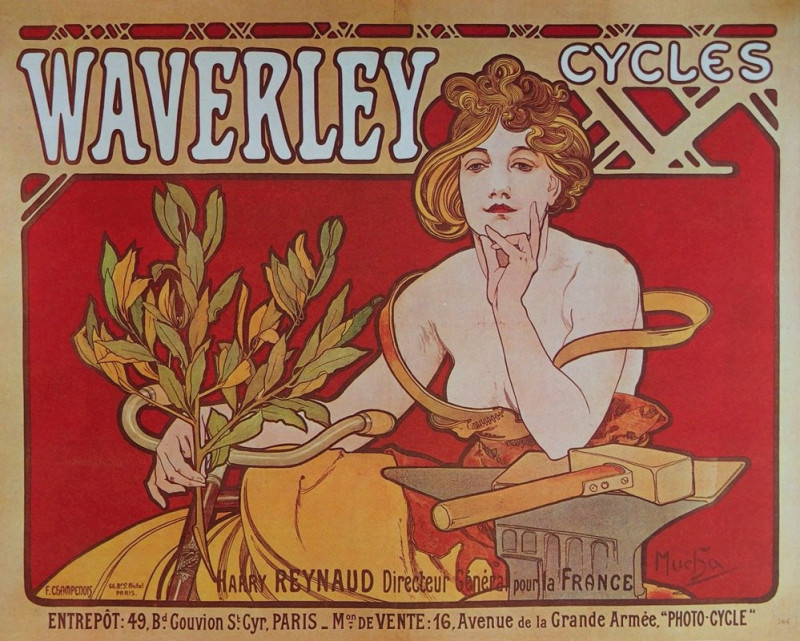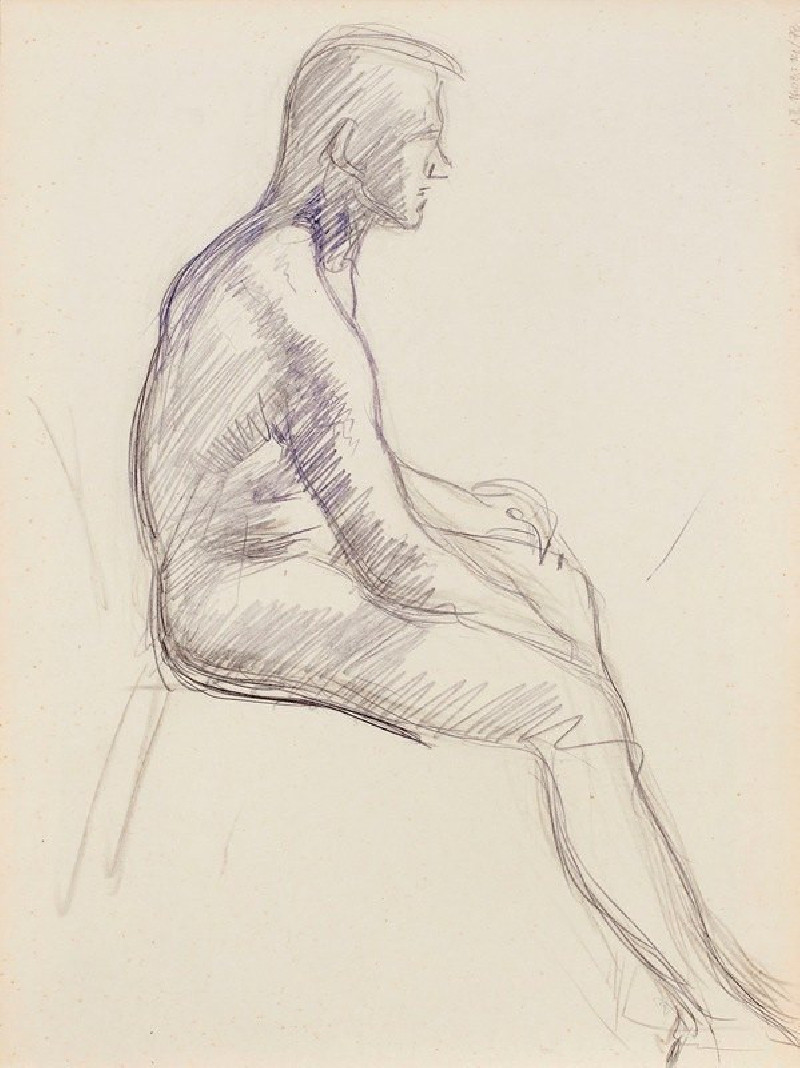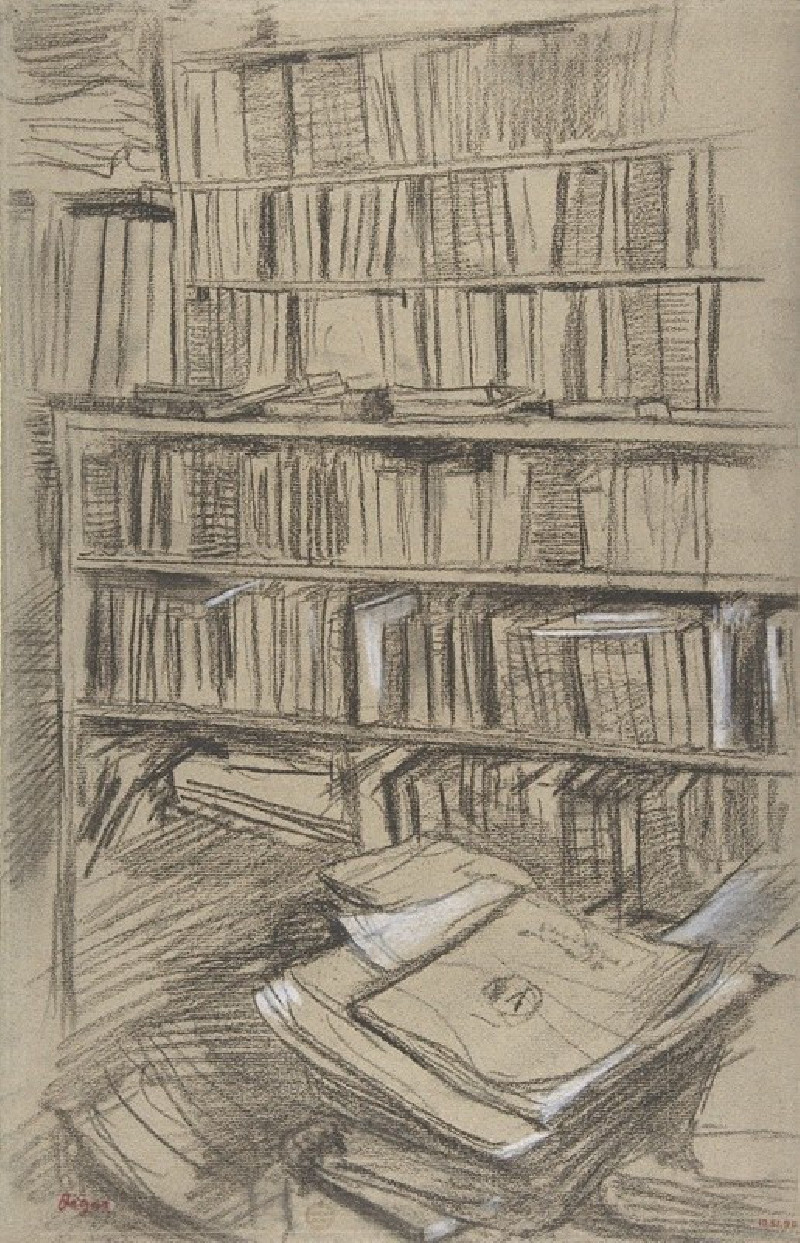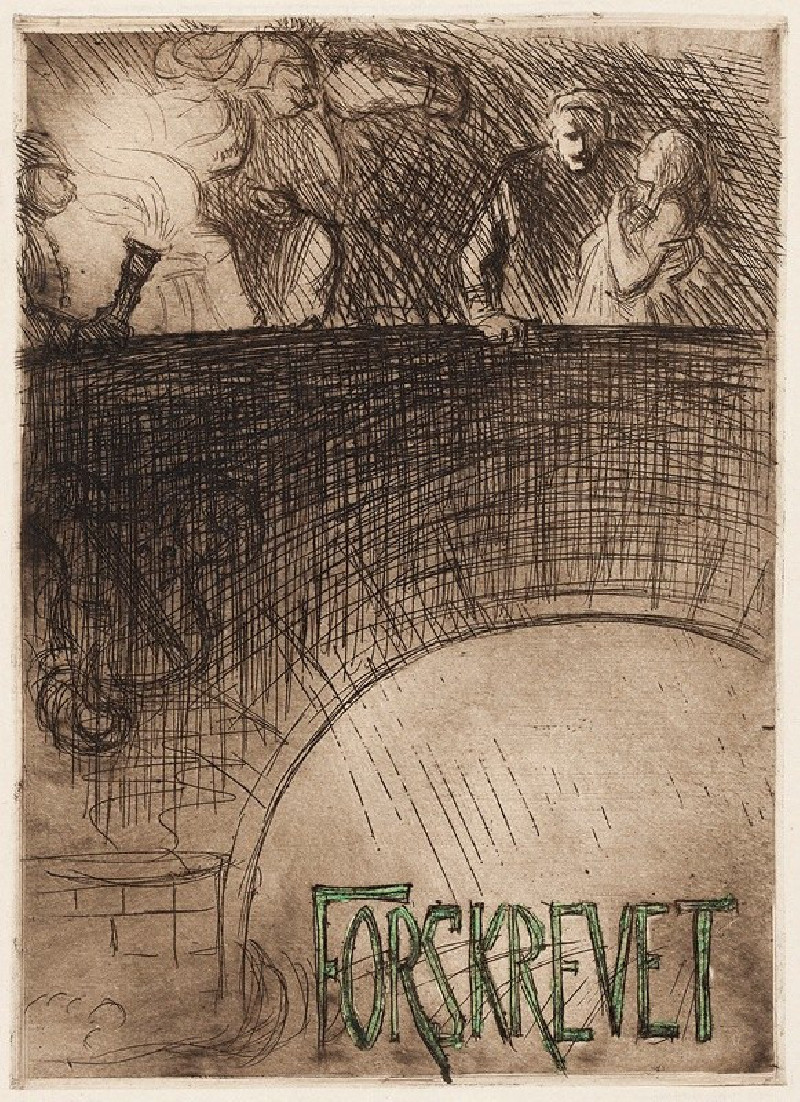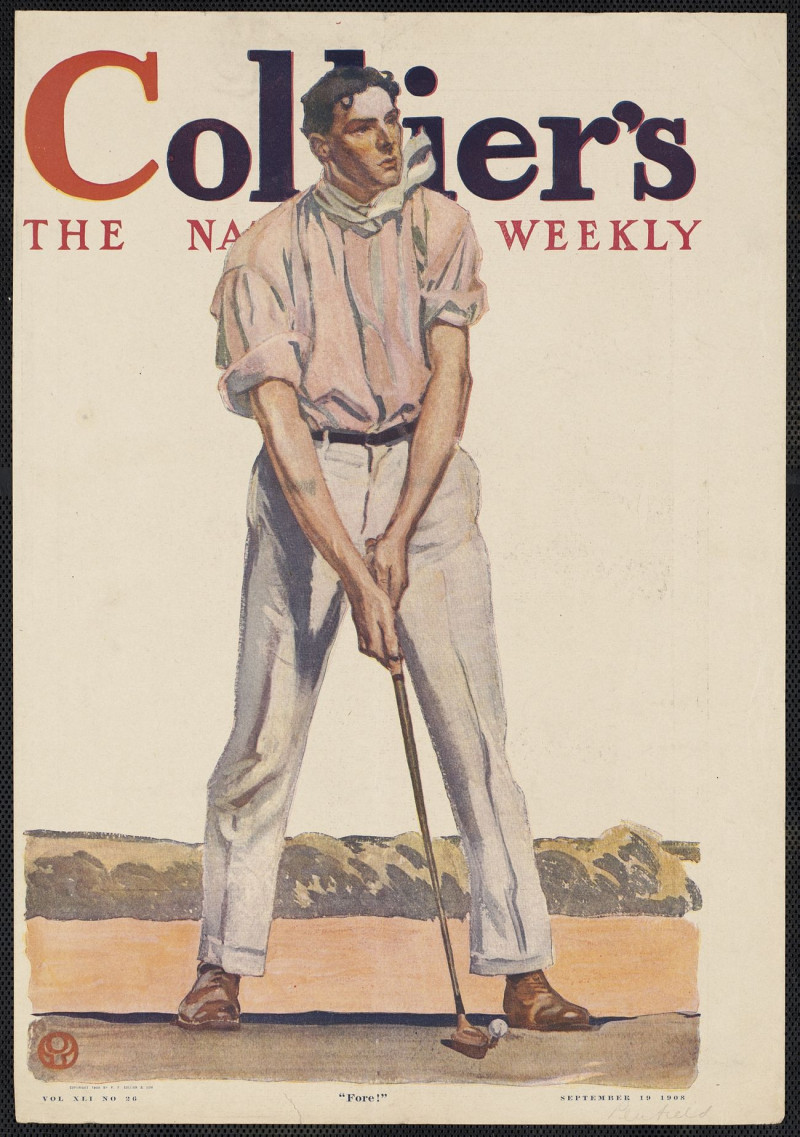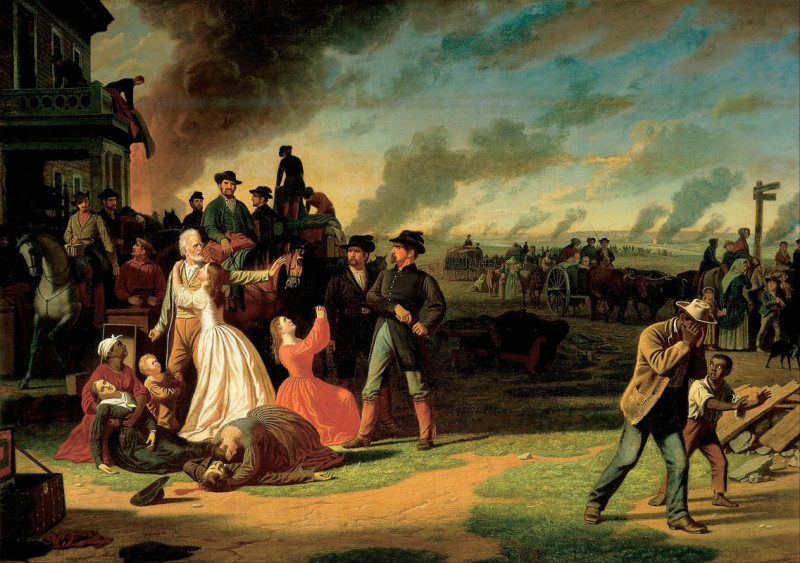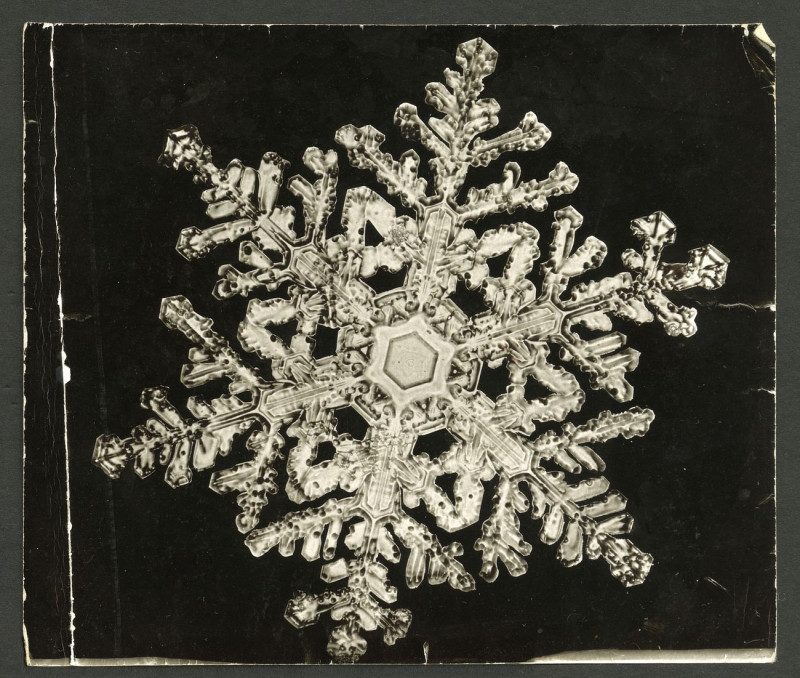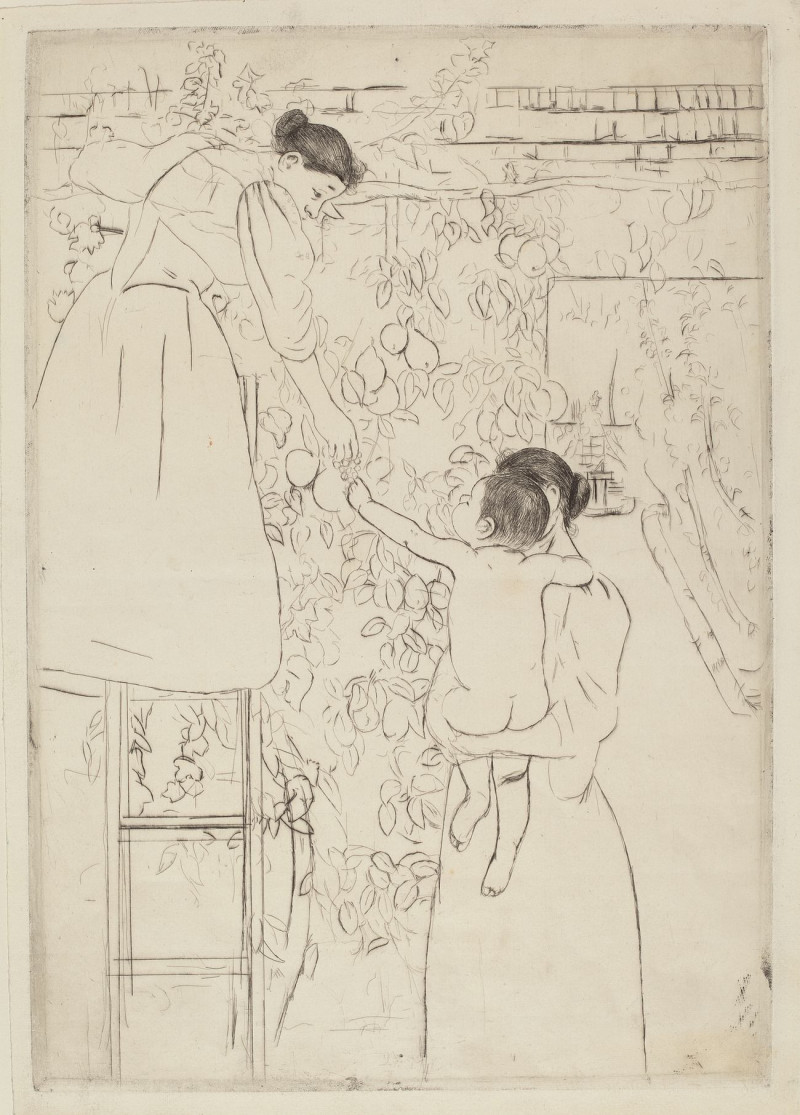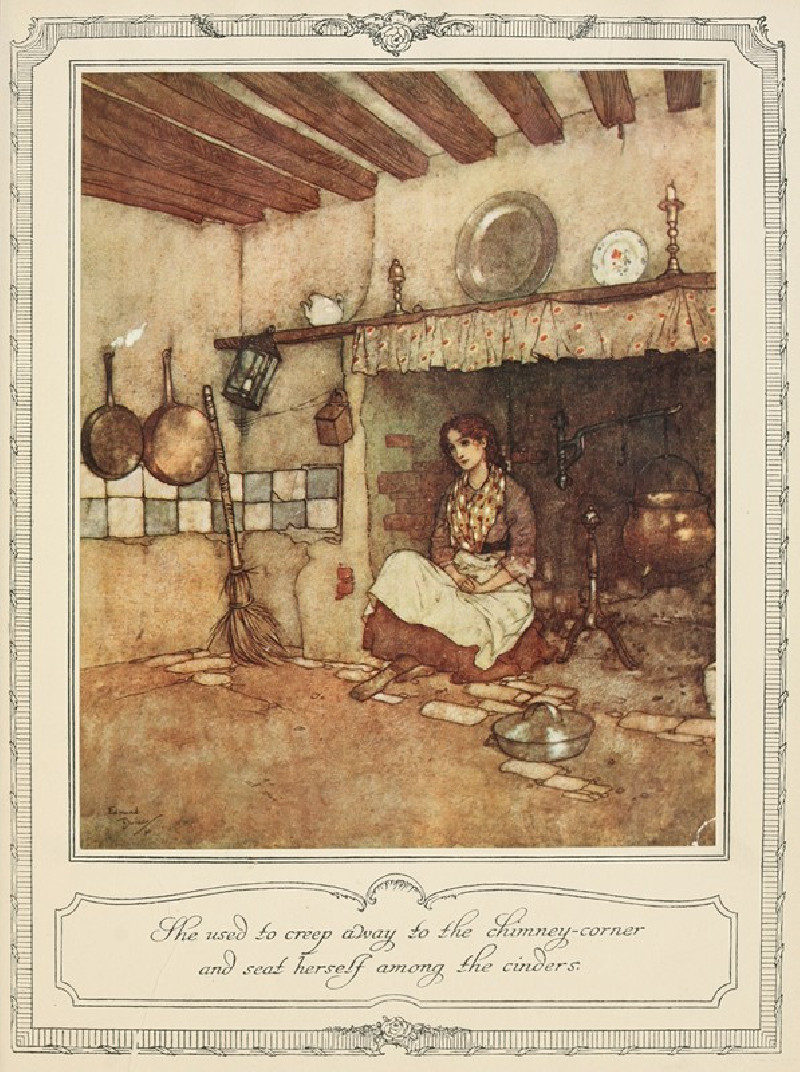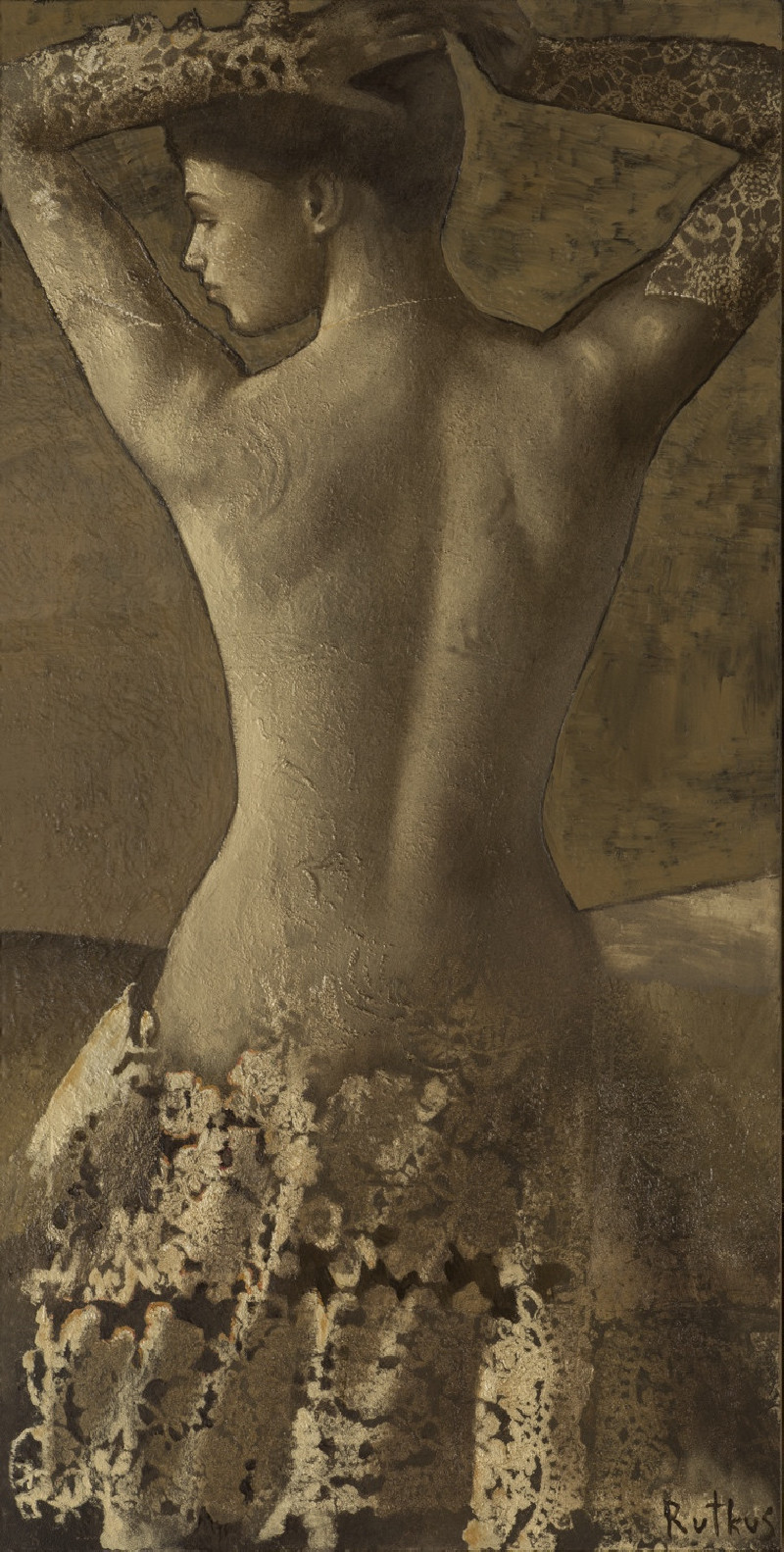Topole (1901)
Technique: Giclée quality print
Recommended by our customers
More about this artwork
Experience the timeless allure of Jan Stanisławski's "Topole" (Poplars), painted in 1901. This intriguing artwork captures a serene natural scene that invites the viewer into a reflective state.At the heart of this painting, a group of slender poplar trees reaches towards a dynamic sky, their forms blurred yet unmistakably vigorous, evoking a sense of resilience and grace. Stanisławski uses a layered color palette of greens, blacks, and hints of blue to emphasize the silhouettes of the trees against the backdrop of a swirling, almost tumultuous sky.Below these towering poplars, their reflections shimmer across the water's surface, creating a boundary where the kinetic energy of the sky meets the tranquil depths below. This reflection adds a dreamlike quality to the piece, blurring lines between reality and reflection, urging the observer to ponder deeper on nature’s quiet magnificence and the enchanting play of light and shadow."Topole" is not only a visual exploration but also an emotional journey, showcasing Stanisławski’s prowess in invoking mood and atmosphere through his distinct impressionistic style.

